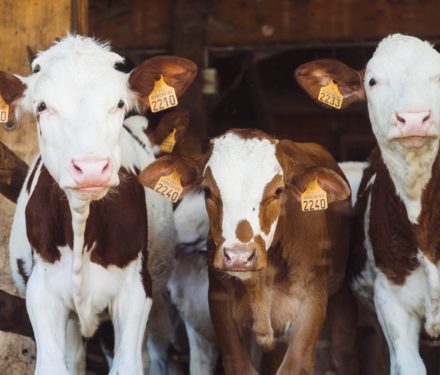Has the EU taken effective steps to combat AMR?
Recently the European Court of Auditors (ECA) published an examination of EU efforts EU support for the fight against antimicrobial resistance has been effective. The audit focused on several categories to determine success; chiefly the report looked at whether the EU has managed their resources well and if they have made an effective contribution towards reducing AMR. To this end, the audit considered the efforts s of the European Commission and the European Centre for Disease Prevention (ECDC) specifically1.
The ECA report found that there is little evidence that EU efforts against AMR have had any significant impact. The activities of the European Commission (EC) and other EU agencies have led to some progress, mostly regarding veterinary and food related issues, however, the overall EU health AMR burden has not decreased. National governments rather than the EC have proposed a new research partnership on AMR funded through Horizon Europe.
The issue of AMR is a multifaceted issue impacting both health policy as well as the economy. In the EU infections from drug resistant bacteria contribute to to at least 33,000 deaths annually (several Member States do not report on AMR deaths) and €1.5 Billion in economic losses2. Evaluating the successes and shortcomings of EU initiatives to combat AMR is an important step to locate where gaps in policy exist and to improve current regulations.
1999 Scientific Steering Committee Opinion on Antimicrobial Resistance
The Opinion on Antimicrobial Resistance adopted by the European Commission’s Scientific Steering Committee (SSC) in 1999 gave precise recommendations for limiting the emergence and spread of AMR3. This effort aimed to be the beginning of a concentrated effort to curb the threat of AMR in Europe and, as such, laid the groundwork for future policy. The Opinion recommended that the EU impose tighter controls on the sale, supply, and distribution of antimicrobials to limit the volume circulating in the market and reduce their widespread use. In tandem with this recommendation they also included the aim to eliminate incentives to use antimicrobials particularly in the animal husbandry industry where antimicrobials are used to prevent infection and to promote animal growth.
To this end, by stopping the incentives, the Committee aimed to curb the improper use of antimicrobials in animal husbandry altogether. Their suggestions included replacing the practice with alternative treatments to prevent disease such as vaccines and probiotics that can protect against infections without contributing to AMR. If there are no viable alternatives and after a disease has started, only then can herd treatment with antimicrobials be used. However, in these cases, the Opinion viewed this solution as a failure of their preventative measures and it should be subject to evaluation and investigation4.
Lastly, the Opinion stressed the importance of cooperation across all relevant sectors. All involved stakeholders from academic departments to pharmaceutical companies and medical researchers should be able to openly share data and best practices to lessen the impact of AMR.
These recommendations were made on May 28, 1999 followed shortly by the second Opinion in 20015. It is of critical importance to measure to what extent these recommendations of the European Commission’s own Scientific Steering Committee have been implemented over the past twenty years. Indeed, it took the European Commission seven years to formally ban the use of antibiotics to promote animal growth…
Twenty Years of Progress?
Only in 2006 the EU introduced a ban on antibiotics as growth promoters in animal feed across its member states. Though an ambitious step against AMR, the legacy of this ban has been underwhelming. In the years since, there has been little overall decrease in the amount of antibiotics used as growth promoters and improper usage is still widespread. Industries continue to be able to sell massive volumes of antibiotics with steeply reduced prices to individual buyers (Parliamentary Question, 4 November 2015).
Overuse of antibiotics in animal husbandry as growth promoters and preventative measures is one of the leading contributors to the spread of AMR. While the EU has attempted to ban this use, countries around the world continue to struggle with such bans. The People’s Republic of China has set an example by totally banning in-feed antibiotics as of 1 January 2020 with enforcement starting as of July 2020. In other (developing) countries where meat consumption will continue to grow exponentially, antibiotics use is expected to grow with 67%! Certain investment banks encourage investment in antibiotics production. Such matters require addressing both at EU and UN levels.
One of the more recent actions taken against AMR is the One Health Action Plan Against AMR rolled out by the EU in 2017. While this plan aims to be the successor to the 1999 SSC Opinion, it lacks the specific recommendations and concrete, measurable policy goals of its predecessor. However, the EU has initiated a programme supporting the research and development of new antibiotics as well as the New Drugs for Bad Bugs Programme6. Regrettably, experts, including the European Court of Auditors, consider these measures insufficient. It is expected that the European Parliament will require the European Commission to take more effective and immediate actions including measures to fund the development of new molecules with the support of EU Member States and the Commission (Horizon Europe, the research and development programme of the European Union from 2021 to 2027).
Since 2001 a conservatively estimated 400,000 people in Europe alone have died from drug-resistant infections. The yearly death rate attributed to AMR continues to be shockingly high and demands detailed and actionable policy decisions to address one of the greatest ever global health threats.


 Report
Report


